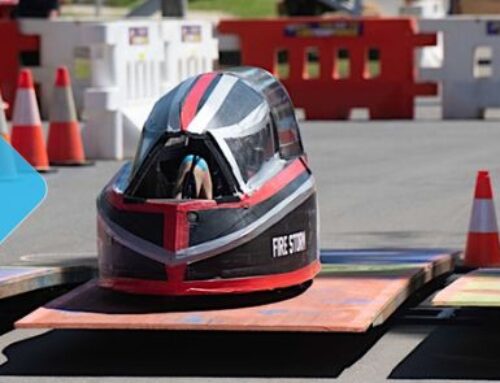With our new Energy Breakthrough Lead Scrutineers now in place as reported recently, we have two changes to the Energy Efficient Vehicle (EEV) Specifications relating to items 5.3 Battery Casing and 5.6 Power Limitations. The relevant changes are underlined below and are included in the revised handbook now available for download.
5.3 Battery Casing
- Batteries with deformed or damaged cases are not acceptable for use.
- Any Lithium Ion (Li Ion) batteries with thin plastic wrapping must be housed within a
protective case at all times (on and off the vehicle including when charging) to prevent
puncture or damage in an accident. This protective case must be made of nonconductive
material and preferably made of hard-plastic case with a foam padding and
a lead lock. - Wet cell batteries must be housed in a sealed box (e.g. plastic) that will prevent spillage
if the battery is inverted or damaged.
5.6 Power limitations for EEV’s:
- Electrical systems are restricted to a maximum of 48 Volts.
- The power output of Hybrid 1 and Hybrid 2 vehicles must not exceed 250 Watts at the driven
wheel. This output is in accordance with Victoria’s legal limit for licensed road use. - The power output of Electric Only vehicles must not exceed 750 Watts at the driven wheel.
All vehicles must be fitted with a maximum 20 Amp circuit breaker which must be mounted:
- Out of reach of the rider.
- Within 200mm of the battery pack.
- In a position where it is visible to trial marshals when the vehicle is in the pits.
- With tags provided by scrutineers and tags can only be replaced by scrutineers or trial
marshals.
Got technical questions?
Teams are encouraged to direct their queries via their Team Managers to enquiries[at]eb.org.au and these will be logged and then passed on to Tim and Michael for review.
Subscribe
We will endeavour to publish regular technical updates via this website.
Please ensure you are subscribed to our eNewsletter list >





